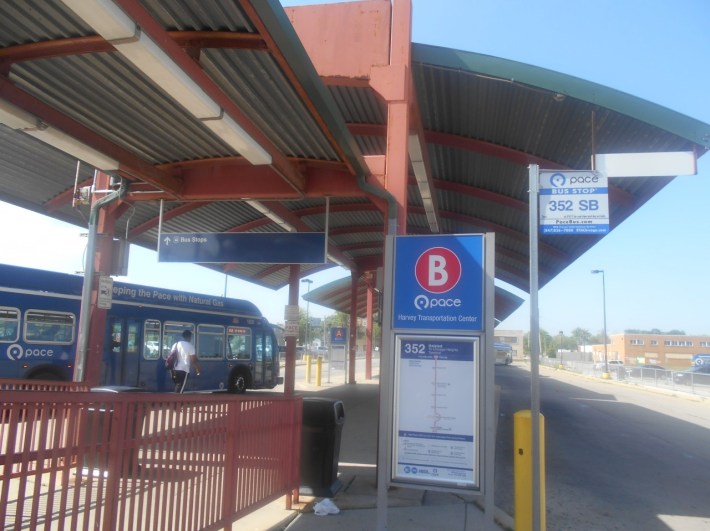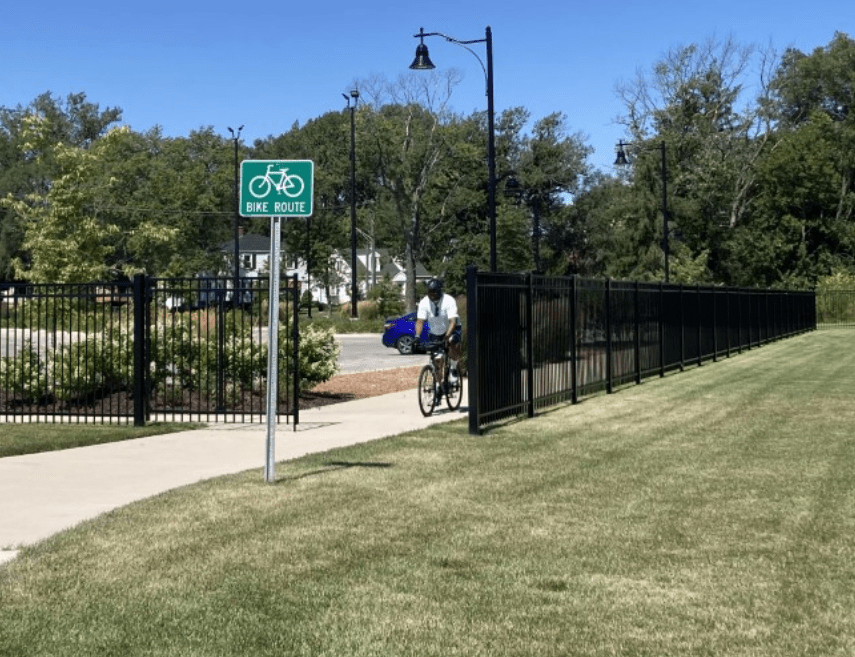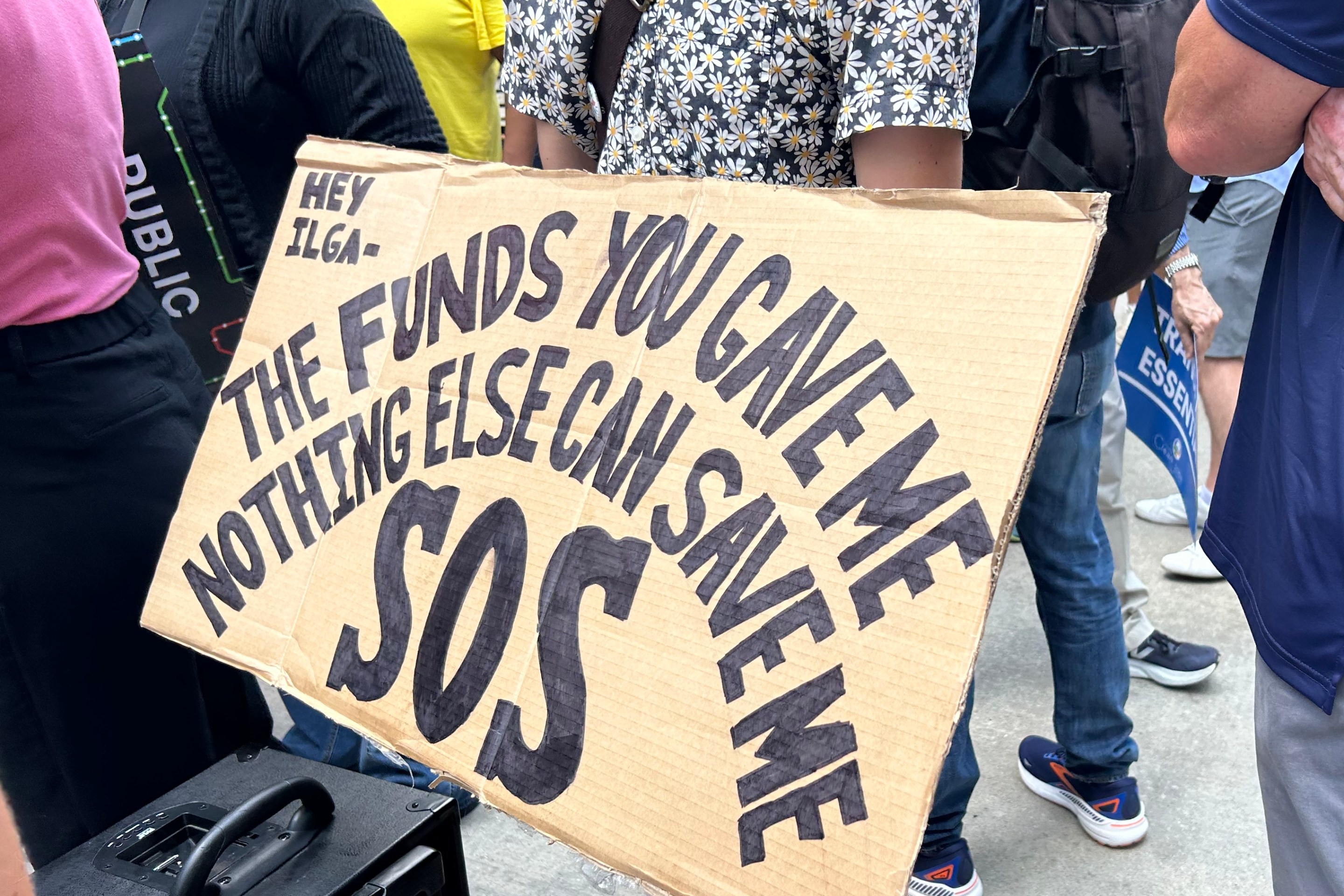The Active Transportation Alliance recently released their COVID mobility report for the south suburbs. ATA spoke with Pace Bus employees, municipal employees, and members of community organizations. The report covered four areas of impact: walking and biking, transit, municipal budget and staffing, and intersecting issues.
Walking and Biking
There were mixed reports on the rates of walking and cycling. Some participants noted more people out on foot and bike while others said they hadn’t seen an uptick. One universal sentiment was that the south and southwest suburbs lack safe walking and biking infrastructure for transportation and recreation. Some participants were able to see the connection between a lack of safe walking and biking infrastructure and dependence on cars, health disparities, greater financial burdens, and dangerous interactions between people walking and biking and people driving. According to one person, "People are fumbling to get around by foot and biking, crossing or riding on busy streets to reach destinations or forest preserves. There’s no clear, safe, or easy way to get around” outside of a car.
One participant noted that with an increase in folks walking and biking, more people are noticing the lack of safe infrastructure. Noted issues are:
- Lack of sidewalks and bike lanes
- Broken sidewalks which present tripping hazards
- Lack of wheelchair-accessible crossings
- Lack of lighting which leads to personal security concerns
- Busy streets that are dangerous to cross
- Disconnected trails and walking/biking networks
- Transit stations that are not easily accessible by foot or bike
Several participants noted that Black and Brown neighborhoods in the Southland, many of which have been hard hit by COVID, are the communities that don’t have a sidewalk network or access to the established trail network. It's especially important to address this issue at this time, when many people are facing a worsening financial situation, which makes it difficult to own and maintain a car. As people head out on foot or on bike to access food, jobs, and other resources, they deserve to be protected from being injured or killed in a traffic crash.
ATA’s recommendations for more county, regional and state funding for walking and biking networks to connect residents to destinations in high-need areas of the Southland makes sense. ATA also recommends funding and implementing of municipal active transportation plans. For municipalities that cannot afford a plan, ATA recommends they be connected to consulting and engineering firms that provide pro-bono assistance. Efforts should be focused on Black and Brown communities and areas with health disparities within the Southland. People and families new to biking should be given assistance and safety materials on how to bike safely in the suburbs.
Transit
Many participants noted that transit is a necessary service during the pandemic. Public transportation provides a cost-effective way to access resources and jobs for youth, older adults, low-income folks, those with disabilities, and those without access to a car. Concerns were voiced about infrequent bus and train service. ATA noted that Pace and Metra have faced budget cuts in recent years which led to service cutbacks. The pandemic has forced more service cutbacks.
Access to transit was also mentioned as an issue. One participant remarked, “Residents have to walk a very long ways to get to a bus stop.”

Concerns unique to seniors were also mentioned. Some residents noted that older residents have concerns about virus transmission when riding transit. One participant who works with seniors noted that many older adults have limited to no access to the Internet and therefore have trouble accessing current transit information or literature around safety precautions.
ATA proposes more investment in transit, particularly more funding for the operating budgets of transit agencies and more funding for new routes that connect low-income communities and seniors to food banks, grocery stores, and medical centers. It also proposes a decoupling of service levels with ridership numbers; focusing future development around Metra and Pace bus stops, and increasing communication about COVID cleaning procedures and best practices for staying safe while taking transit. Recommended communication strategies include sending mailers, partnering with key community organizations and influential community members to share resources, and posting bilingual information at popular destinations such as libraries, food pantries, and transit stops.
Municipal Budgets and Staff Capacity
Many municipalities in the South suburbs are anticipating large budget cuts and have already had to lay off staff. As a result, many walking and biking projects have been delayed or are at risk of being canceled, according to municipal staffers ATA spoke with. Currently the Illinois Department of Transportation requires municipalities to cover 20 percent of walking and biking infrastructure. IDOT covers the cost for all the portions of the roadway that serve cars.
ATA recommends the state covers the full cost when walking and biking infrastructure is included in state roadway projects. State and regional agencies are urged to find creative ways to assist high-need communities in walking, biking, and transit improvements. Cook County’s Invest in Cook was cited as an “excellent” funding model that could be replicated. Invest in Cook is a transportation grant program to implement strategies from the Connecting Cook County plan. The grant program prioritizes various transportation proposals using objective and transparent selection criteria.
Intersecting Issues
In addition to transportation issues, South suburban residents are also grappling with:
- Food access and insecurity
- Job loss and unemployment
- Evictions and homelessness
- Rent and mortgage pressure
- Economic disinvestment
- Storm water and flooding issues
- Lack of Internet access and the digital divide
Personal Reflections
I would love to see IDOT reevaluate the need for road and highway expansion given the changes in travel patterns as a result of COVID-19. Some folks have taken to walking and biking out of economic necessity and some due to feeling safer with lower car traffic in some areas. Those walking and biking should not be at an increased risk for injury or death due to the state neglecting to create safe walking and biking conditions. Safe walking and biking conditions and transit improvements for all communities must come before road and highway expansions. High-need communities should be first in line for these projects and per ATA’s recommendation, the state should cover the full cost of these facilities.
Given the high rate of under- and unemployment due to the pandemic and the concurrent climate crisis, walking, biking, and transit projects should be pursued with urgency. Pedestrian and bicycling projects create more jobs, almost 50 percent more, than car-only road projects, and they assist the state with necessary emission reductions. Climate change will impact low-income communities the most, so the least we can do is go all-in on mitigating some of those impacts.





